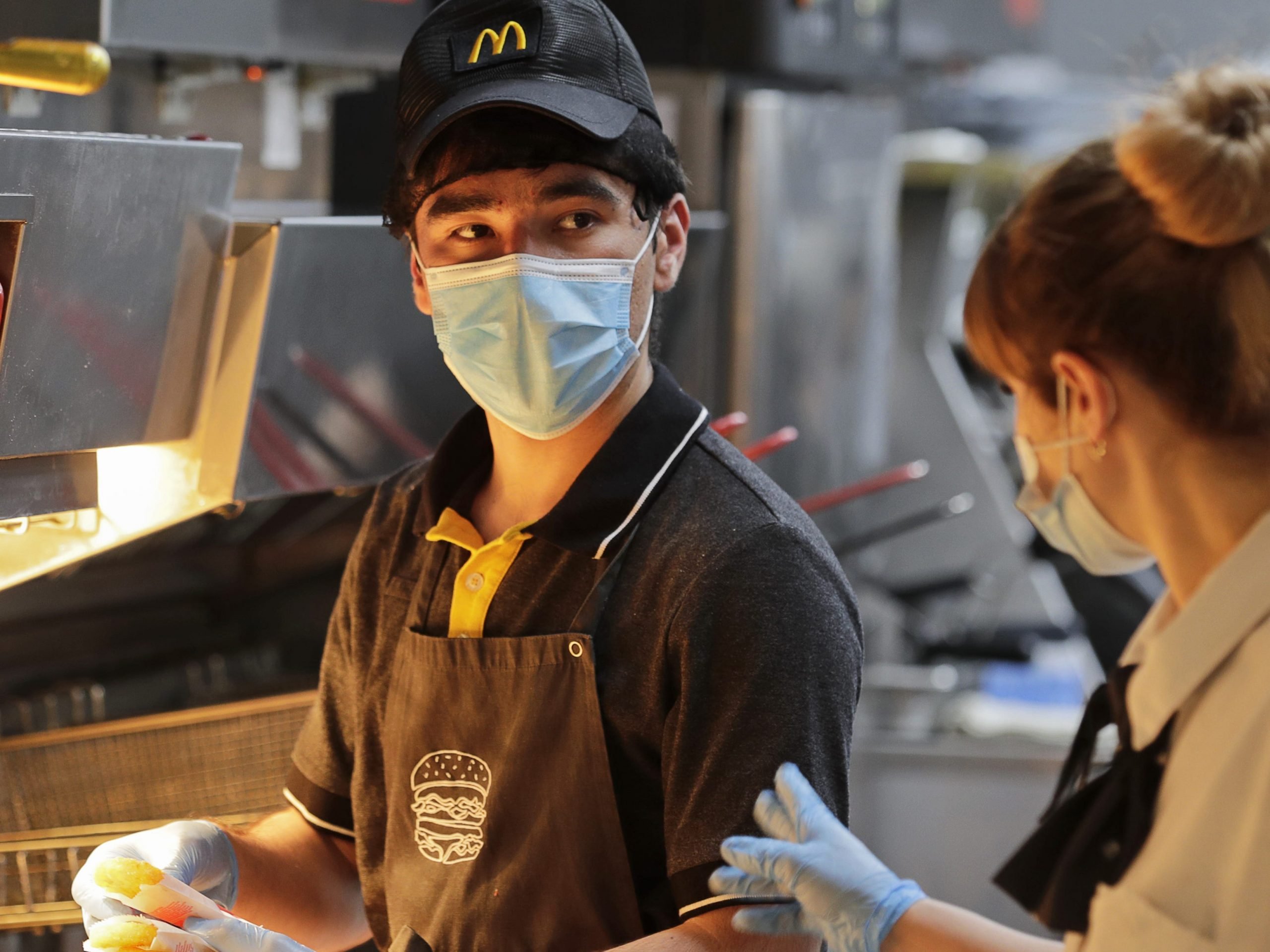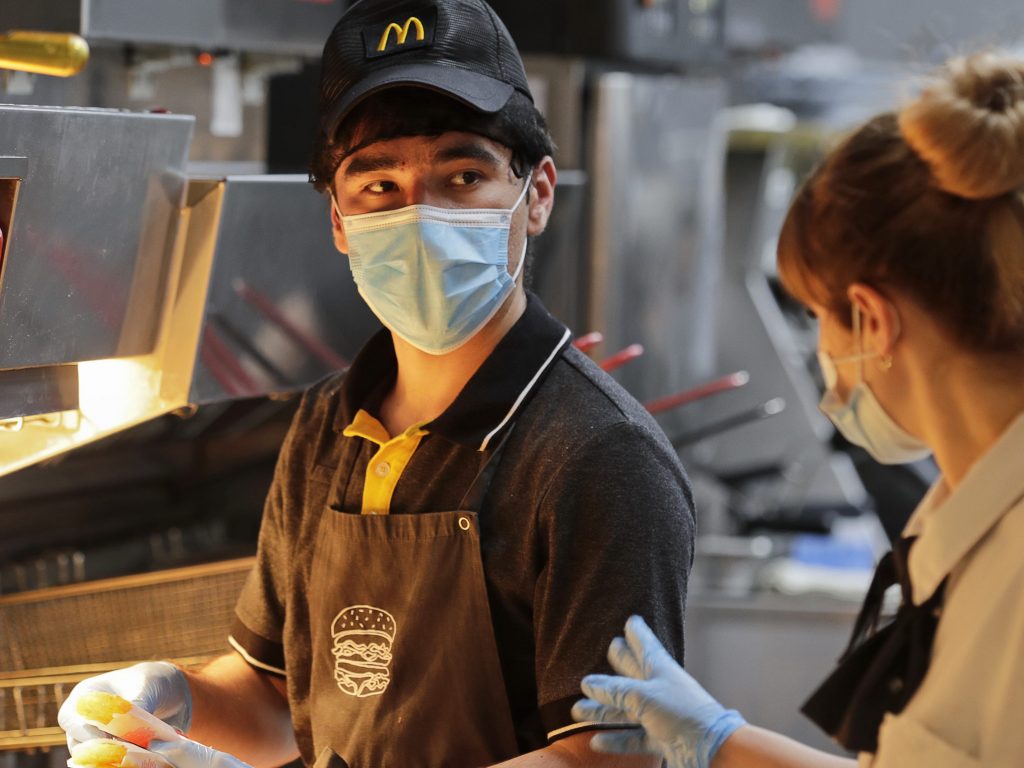
Mikhail MetzelTASS via Getty Images
- Factories are struggling to raise wages as quickly as fast-food chains during the labor shortage, the WSJ reported.
- Restaurants can offer perks to attract new workers, but manufacturers say it's more difficult for them.
- "Everybody is fighting for the same people," one expert said.
- See more stories on Insider's business page.
Fast-food chains are pushing up wages amid the current labor shortage – and factories are struggling to raise theirs as quickly, which is one of the reasons a stream of workers is leaving the manufacturing industry, according to a report by The Wall Street Journal.
Factories have historically offered better wages than restaurants and retail companies. They still pay workers much higher wages on average, The Journal reported, but fast-food chains are now raising their wages at a much faster rate.
Factories are now struggling to find enough workers to meet the booming demand for furniture and other goods, manufacturing experts told the paper.
"There is just more opportunity to work somewhere else than there was in the past if you are looking for a living-wage job," Julie Davis, head of workforce development for the Association of Equipment Manufacturers, told The Journal.
"Everybody is fighting for the same people," Daniel Quintanilla, director of talent acquisition at Michigan automotive supplier Gentex, told The Journal.
Hourly factory workers made an average of $23.41 an hour in April, or 56% more than restaurant and fast-food workers, according to the Journal's analysis of federal data. This was down from 83% 10 years ago.
Grocery stores, restaurants, and hotels are offering perks from higher wages and education benefits to cash bonuses and even free iPhones as they scramble to find new hires as the economy reopens and customers return.
Manufacturing executives told The Journal that as well as struggling to find workers, they're also being hit by higher prices of raw materials including fuel, lumber, and packaging amid the current shipping crisis, making it harder for them to afford new staff perks.
Some restaurants have been hiking up prices to offset the higher wages. But Paul Isely, a business professor at Michigan's Grand Valley State University, told The Journal that it's harder for manufacturers to raise prices because they have to compete with factories around the world, not just nearby restaurants.
Lawrence Mishel, an economist at left-leaning think tank the Economic Policy Institute, told the publication that global competition, outsourcing and contractors, and lower unionization rates were also causing manufacturing jobs to lose their wage premium.
As a result of all these changes, the proportion of US workers employed in the manufacturing industries was shrinking. Less than 9% of US workers are currently employed by manufacturers, The Journal reported. In the early 1980s this was more than 20%.
One manufacturer told the Dallas Fed for June's Beige Book that even with a starting hourly wage of $14, the company was unable to fill more than 20 open positions. Texas uses the federal minimum wage of $7.25.
The Federal Reserve said that the tight labor market could last months, but Bank of America expects the job market to recover by early 2022.
